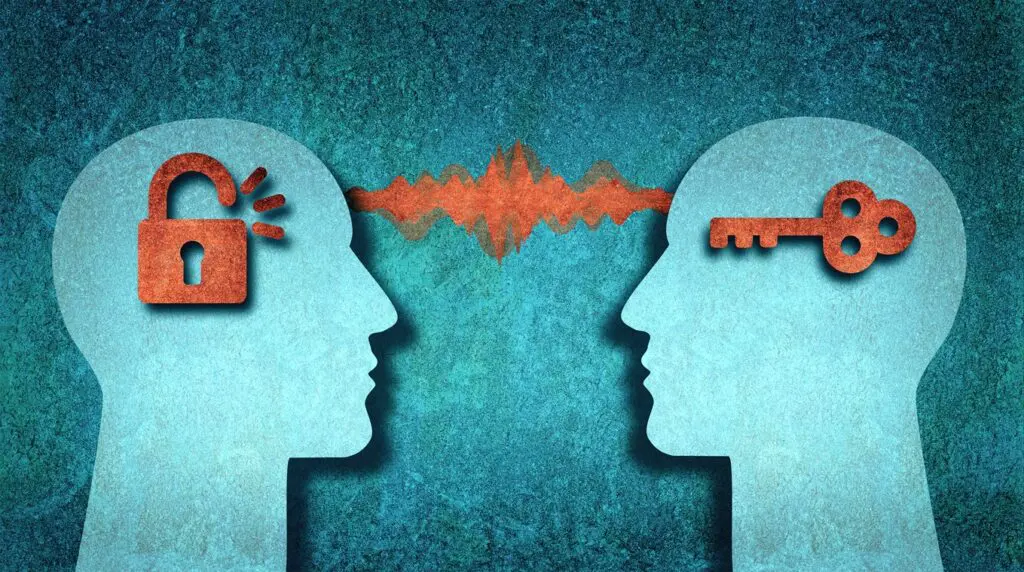Using Emotions and Visions to Motivate Change
The Biochemistry of Motivation

If you are trying to influence people to change their behavior, unless they clearly see value in changing and a path safe from failure or loss, they will resist your suggestions. Emotions are often triggered when people are presented with a view of a possible future that conflicts with their current views of what is right and how they define who they are today.
However, an observable vision of a possible reward or meaningful outcome may stimulate positive feelings and encourage even risky actions in the same way that good stories inspire and influence change.
In 1884, William James wrote an essay describing how emotions are reactions to threats to the meaning we give to present circumstances. He said,
From childhood, “…we develop frames of reference that classify and categorize the blooming
buzzing confusion of reality into comprehensible morsels of meaning.”1
These morsels are encoded in the circuitry of the brain. We then interpret what we see in the moment by comparing it to what we have come to believe. We quickly formulate judgments, reactions, and resistance to change.
Our beliefs guide our actions as we navigate daily life. The more we are told a truth that clashes with what we believe, the more we resist, argue against, or focus on the dangers of change.
Using biochemistry to motivate change
You must create a compelling narrative that engages and inspires people before they embrace a possible change of mind and heart. Even more important, as you share what you see, your energy must convey that you genuinely care about and believe in them.
The positive exchange of energy along with the inspiring vision of possibility activates their motivation to try doing something or being someone new.
In other words, they must trust you genuinely want to see them achieve something that is significant for them. Then your inspiring story or inspirational vision can break through their illusion of reality.
This remodeling of reality is only possible in safe, respectful Relationships. We allow our emotional pathways to be transformed by the people who respect and care about us.
Once they know you care and believe in them, you can offer a dynamic view of what you believe is possible for them.
The discomfort that triggers adrenaline when facing an uncomfortable change subsides when we feel safe, cared for, and inspired by compelling vision. Three neurochemicals are produced that wake up the creative brain:
- Oxytocin: I want to connect with you because you honor my dignity and significance.
- Serotonin: I feel safe with you and open to learning what will help me move forward.
- Dopamine: When you share what is possible for me, I feel inspired and confident.
The payoff is a gradual willingness to release the patterns of protection in favor of connection and personal exploration.
Paint the vision that will motivate
From parents reading their children stories before they Sleep, to our friends and teachers sharing life-changing events that taught lessons, to our own memories of when we succeeded or failed… we think and act based on the stories we live, read and hear. The more emotional impact the story has on us, the more we will shift how we see the world and ourselves in that world. If the story helps us see that what we deeply desire can come true, we might be motivated to change.
The greater their Anxiety and doubts,
the more inspiring your vision of what is possible needs to be.
In The 7 Habits of Highly Effective People, Stephen Covey said his habit #2 is
- Begin with the end in mind.
Covey wrote about the power of envisioning the best possible scenario instead of focusing on the risks and possible losses.
Facts don’t change minds.
People must SEE a new future to go beyond their fears and doubts.
However, when looking into the future on our own, it’s easy to start with a desire and then slip into thinking about how much work must be done, what won’t work when we try, and how crazy we are for even considering, “I am capable and worthy enough to succeed.”
If you can coach people to envision an inspiring possibility they can create, you can then uncover and clarify what is needed to overcome pitfalls. Then you coach them embrace the sense they are good enough to start making this vision come true.
If you are in a role where you want to inspire people to change by painting a vision they can see instead of Coaching them to create it, be sure the picture provides them with results that would be meaningful to them. Paint the picture and then tell the story of how they can overcome their challenges to achieve their aspirations. They may still have doubts but at least they can see and hold onto the possibility of creating a rewarding situation and becoming the person they seek to be.
Before you have the conversation of change, consider what the person most wants to achieve or experience more of. If you don’t know this, you might first have a conversation focused on clarifying and articulating what they desire for themselves in the time frame you plan for the change.
Once you know what they want more of in their work or life, consider a vision that incorporates:
- What will be different when they get what they want? What will it look like?
- Who will they be in this picture? Is the person they can become inspiring to them?
- What would the path look like that will take them toward their aspirations?
Instead of telling people to do what you think is right, inspire them to see what you see is possible. This picture is worth more than 1,000 facts!

























